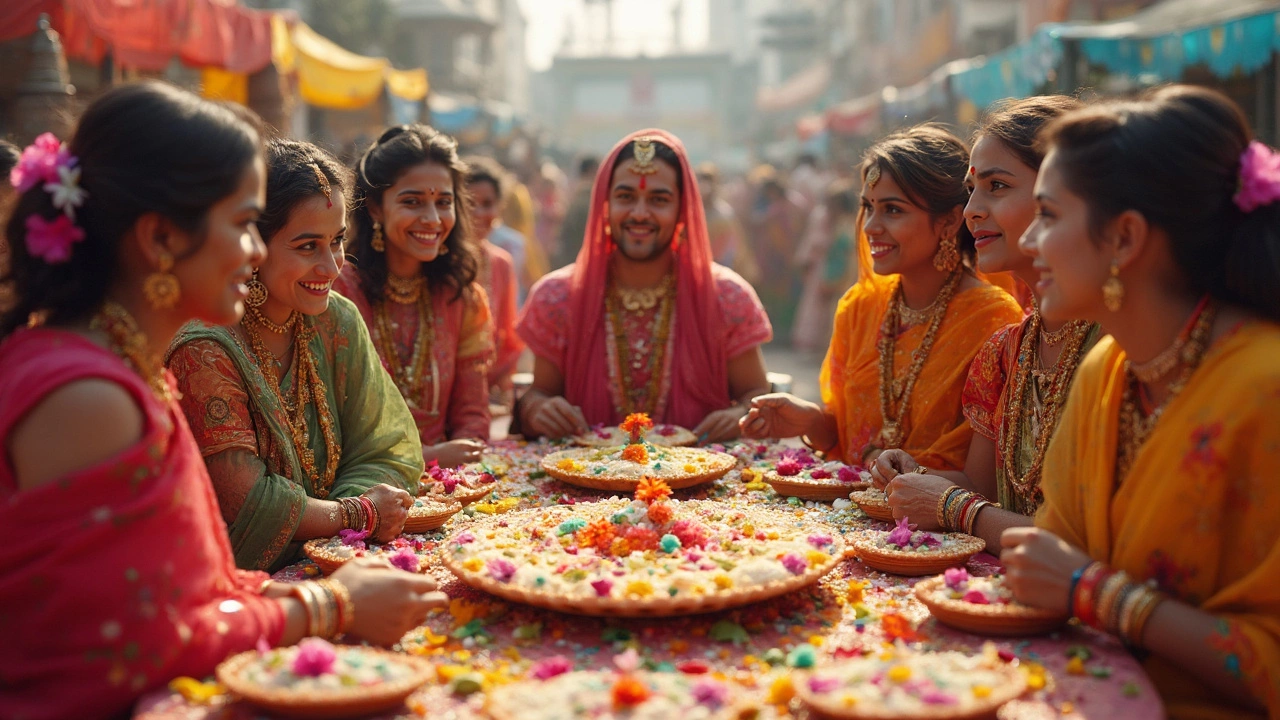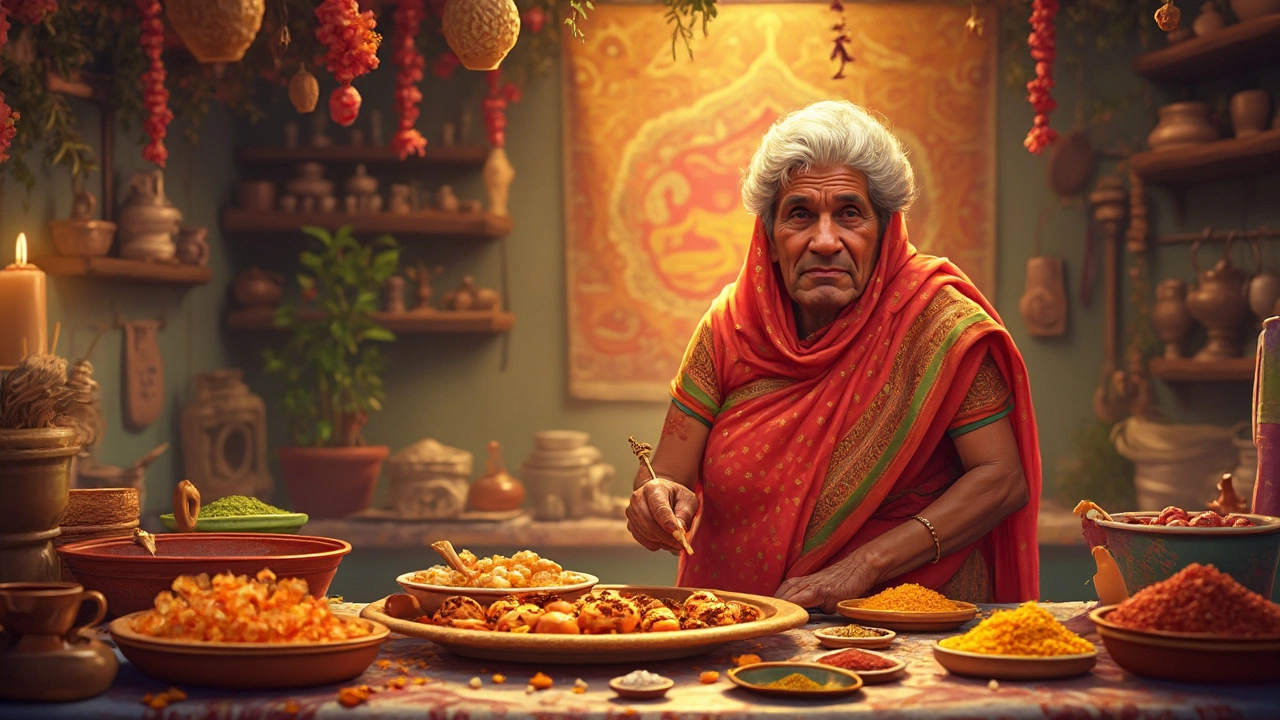If you've ever set foot inside an Indian household or attended an Indian celebration, you know that sweets are a big deal. But ever wonder why they're so integral to the culture? It’s not just about satisfying a sweet tooth. Sweets in India carry meanings, traditions, and even blessings.
In Indian culture, the first sweet morsel is often eaten to mark happy beginnings—be it a wedding, birthday, or festival. It’s like wrapping every special occasion in a dash of sweetness. Sweets also feature prominently in religious offerings, signaling devotion and gratitude. Understanding why Indians eat sweets gives you a peek into how intertwined food is with culture and tradition.
There’s something for every taste, from melt-in-your-mouth barfis to crispy jalebis that bring a delightful crunch. These sweets are not only consumed domestically but also shared with friends and family, strengthening bonds and celebrating community.
Cultural Significance
India is a diverse land of many cultures and traditions, and wherever you look, you'll find Indian sweets playing a key role. It's not only about indulging in delightful tastes but also about deep-rooted traditions and beliefs. So, why are sweets so cherished?
Sweets, or 'mithai' as they're commonly known, are often seen as a conduit for blessings and good fortune. Across the country, when someone embarks on a new journey or venture, it’s customary to offer sweets. This acts as a symbol of positivity and prosperity.
Throughout History
Historically, sugarcane cultivation has existed in India since ancient times, with historical texts frequently mentioning sweet dishes. In fact, some historians suggest that India was one of the first regions to process sugar, shaping the very foundation of its culinary traditions. It’s no wonder that Indian sweets have such a special place!
Sweets in Festivities
During Indian festivals, such as Diwali, the festival of lights, families prepare homemade sweets recipes that have been handed down through generations. Sharing these sweets with neighbors and friends is a cultural norm, which strengthens community bonds. Additionally, in rituals, especially Hindu ones, sweets are offered to deities as a form of respect and gratitude before being distributed as 'prasad' among devotees. This practice reflects the belief that good fortune and blessings are shared through the exchange of sweets.
A National Sweet Spot
From the north to the south, east to west, each region boasts its unique range of sweets. For example, Bengal is known for its Rasgulla and Sandesh, while Gujarat has its famous Mohanthal and Penda. Such variety is a testament to the rich diversity within Indian cuisine.
In essence, Indian sweets are more than just culinary creations; they embody the spirit of celebration, community, and tradition, making them an irreplaceable part of Indian life.
Festive Celebrations
India is known for its colorful festivals, and each one is a grand spectacle filled with merriment and, of course, sweets. From Diwali to Eid, there's always a special treat making the rounds.
Diwali
Diwali, the Festival of Lights, is probably the biggest and brightest of them all. It’s marked by the lighting of lamps, bursting of crackers and the exchanging of sweets. Popular treats like jalebis and gulab jamuns are made in large quantities. Families come together to exchange boxes filled with myriad Indian sweets, each box a little treasure of indulgence.
Eid
During Eid, the focus is on warm hospitality and sharing. An all-time favorite during this festival is seviyan, a sweet vermicelli pudding cooked with milk and adorned with nuts and raisins. After the communal prayer, families often visit each other to celebrate with meals and, of course, a range of sweets like kheer and barfi.
Holi
Come Holi, colors adorn everything and sweets are shared by all. The festival wouldn't be complete without gujiya—a sweet dumpling stuffed with khoya and dried fruits. Known for its playful nature, Holi is just as much about the mood as it is about the delightful feast.
In most Indian festivities, preparing these sweets isn’t just about cooking. It symbolizes passing down cherished recipes through generations, bonding with family, and sharing joy. It's like baking happiness into every bite, making each celebration memorable and meaningful.

Popular Sweets
India's world of Indian sweets is as diverse as its culture. Ever wondered which sweets steal the show at festivals and gatherings? Let's dig into some favorites that are loved by people across regions.
Gulab Jamun
Gulab Jamun might just be the quintessential Indian dessert. These deep-fried dumplings made from milk solids, known as khoya, are soaked in a sugary syrup flavored with cardamom and rose water. Served warm or cold, they're a staple at weddings and celebrations.
Jalebi
Jalebi is a crispy, syrupy delight that's hard to resist. Made by frying batter in spirals and soaking it in sugar syrup, it's often eaten with yogurt or milk. You'll find jalebis being made in giant woks during festive occasions or on the street for a quick indulgence.
Ladoo
From boondi to besan, ladoo comes in many forms but always as a round ball of joy. It's often made during religious ceremonies and distributed as prasad, considered a sacred offering. Each type of ladoo has its own charm and recipe, using ingredients like chickpea flour, coconut, or sesame seeds.
Barfi
With a base of condensed milk, barfi is flavored with anything from coconut to pistachios. Each variety offers a unique twist, whether it melts in your mouth or adds a nutty crunch. It's particularly loved during Diwali when homes are lit up and so are taste buds!
| Sweet | Main Ingredients | Occasion |
|---|---|---|
| Gulab Jamun | Milk solids, sugar syrup | Weddings, Festivals |
| Jalebi | Flour, sugar syrup | Religious festivals, Street food |
| Ladoo | Various, including chickpea flour | Religious ceremonies |
| Barfi | Condensed milk, variety of flavorings | Diwali, Festive occasions |
Each of these sweets not only satisfies cravings but also tells a story of heritage and cultural richness. Next time you enjoy an Indian sweet, you'll have a deeper appreciation for its role in Indian tradition.
Homemade Recipes
Making Indian sweets at home might seem intimidating, but with the right guidance, you can whip up some delicious treats that will impress any guest. Yes, it takes time and patience, but the results are absolutely worth it. Not to mention, nothing tastes better than something you've made from scratch.
Recipe: Gulab Jamun
Let's start with a classic: Gulab Jamun. These little dough balls soaked in syrup are beloved all over India. Here's how you can make them:
- Ingredients: You'll need 1 cup milk powder, 1/4 cup all-purpose flour, a pinch of baking soda, 2 tablespoons ghee, and 1/4 cup warm milk for the dough. For the syrup, 1 cup sugar and 1 cup water do the job, and don't forget a few cardamom pods for flavor.
- Make the dough: Combine the dry ingredients with ghee and then mix in warm milk to form a smooth dough. Don't knead too much; just bring it together.
- Shape the balls: Roll small portions of dough into smooth balls without cracks.
- Prepare the syrup: In another pan, dissolve sugar in water with cardamom. Boil until slightly thickened, but not too heavy.
- Fry and soak: Deep-fry the dough balls on low heat until golden brown. Once done, immediately soak them in warm syrup for at least 30 minutes.
Voilà! Serve them warm, and enjoy the sweetness.
Recipe: Besan Ladoo
If you're in the mood for something easier, Besan Ladoo is your answer. These sweets are made from gram flour and melt in your mouth.
- Ingredients: Have 2 cups besan (gram flour), 3/4 cup ghee, and 1 cup powdered sugar ready.
- Roast the flour: Heat the ghee in a pan, add besan, and stir constantly until it turns golden brown and smells nutty. This might take a little while, so be patient.
- Add sugar: Let the mixture cool a bit, then add powdered sugar. Mix well.
- Shape the ladoos: While the mixture is still warm, scoop portions in your palms and roll them into balls.
These sweets recipes not only provide a peek into India's rich culinary tradition but also deliver a sense of accomplishment and joy when made at home. Whether you want to enjoy these classics yourself or share with loved ones, homemade sweets have a special charm.
